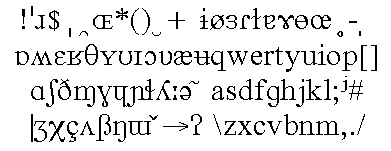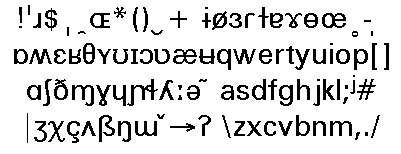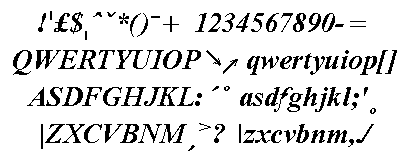
The IPA-SAM phonetic fonts
Please note: These fonts are now "legacy fonts": obsolete, symbol-encoded fonts. Their use in new documents is discouraged. If you decide to download and use these fonts, please note there is no user support for them. If your university or organization requires the use of these fonts, please request they change their requirement to one of the Unicode-encoded font which contains the complete IPA repertoire. Many such fonts are now available, and several are supplied with all new computers. Others are available from SIL." OverviewThe IPA-SAM phonetic fonts are TrueType® fonts for use on IBM-compatible PCs running Windows. (They also work on Mac OSX.) With them installed, you can display phonetic symbols on the screen and print them out in any size. The IPA-SAM character set includes all the symbols of the International Phonetic Alphabet as currently recognized by the IPA. There are three typefaces: Doulos (similar to Times), Sophia (san serif) and Manuscript (similar to Courier, monospaced). All are available in regular, bold, italic, and bold italic. The most useful phonetic symbols are mapped onto the keys of the ordinary keyboard. For example, if you type shift-D you get ð, while shift-C gives you ç; instead of the figure 2 you get ø and instead of the @ symbol you get a schwa. In this way you can immediately access all the symbols you need for the phonemic or broad-phonetic transcription of English, French, German, Spanish and many other languages. All the cardinal vowel symbols, primary and secondary, are here, together with a range of allophonic or general-phonetic symbols and stress marks (glottal stop, tapped r, dark l, r-coloured schwa, voiceless alveolar lateral fricative, palatalization diacritic, syllabicity mark, hacek, right arrow...). These key assignments are based on the SAM-PA recommendations. The remaining IPA symbols -- numbering more than a hundred -- have been assigned to ANSI numbers in a logical order. They can be accessed by using the computer's numeric keypad while holding down the Alt key. All diacritics are 'floating', i.e. can be attached to any letter. There are also a number of phonetic symbols here that are seen in use from time to time although not (or no longer) recognized by the IPA. Doulos typeface phonetic font
Sophia typeface phonetic font
Manuscript typeface phonetic font
Intonation phonetic symbol fontAlso, as a special bonus, a font designed for work on tone and intonation, using iconic notation (e.g. O'Connor and Arnold or similar). Includes assorted dots (filled and empty, large and small, at various heights). 
Hints for Microsoft Word UsersUsers of Microsoft Word for Windows (WinWord) can conveniently display the whole character set (once installed) by clicking on Insert Symbol and bringing the name of one of the IPA-SAM fonts (e.g. Ipa-samd) into the Font box. As an alternative to accessing the symbol via the keyboard or Alt+numeric, you can choose a symbol in this display and click on Insert. You can also, if you wish, customize shortcut keys for frequently used characters. You should disable some of the WinWord AutoCorrect functions - particularly those which automatically "correct" i to I or disallow TWo INitial CApitals. Users of any word processor running under Windows can use the Windows Character Map to locate the characters they want. Hints for WordPerfect UsersUsers of WordPerfect for Windows already have a phonetic character set available in WPWin, but one with a number of disadvantages (may display or print in unexpected sizes; phonetic characters are in a san serif font only; but the velar nasal, for example, is regarded as an "international" rather than as a phonetic symbol, and is available only in a serifed font). They will find the IPA-SAM fonts much more flexible. When printing from them, make sure to choose the Windows printer driver (not the WordPerfect printer driver). It will be necessary to disable some of the WPWin Quickcorrect functions: from Tools, chose QuickCorrect, then Options, then in Sentence Corrections turn off Capitalise First Letter, and in Double SmartQuotes turn off Double Quotes. Users of WordPerfect 8 may encounter a problem printing certain characters -- particularly diacritics -- in the IPA fonts. To surmount this, set the code page within Wordperfect 8 as follows:-
Its also best to disable SmartQuotes under Quick Correct within Tools. This prevents odd behaviour when the quotes key is pressed with an IPA font selected. CopyrightThe IPA-SAM fonts are proprietary copyrighted Encore fonts created using Typecaster software supplied by the Summer Institute of Linguistics. x x x x x x x x x x x x x x x x x x x x x x x x x x x x x x x x x x x x x x x x x x x x x x x x |
|
University College London - Gower Street - London - WC1E 6BT - |
